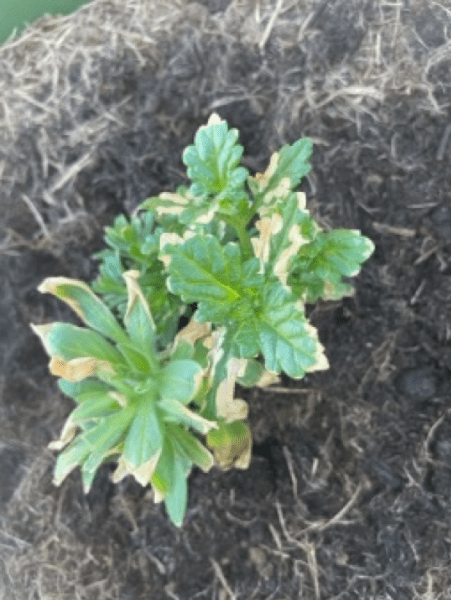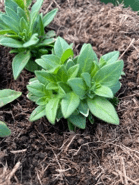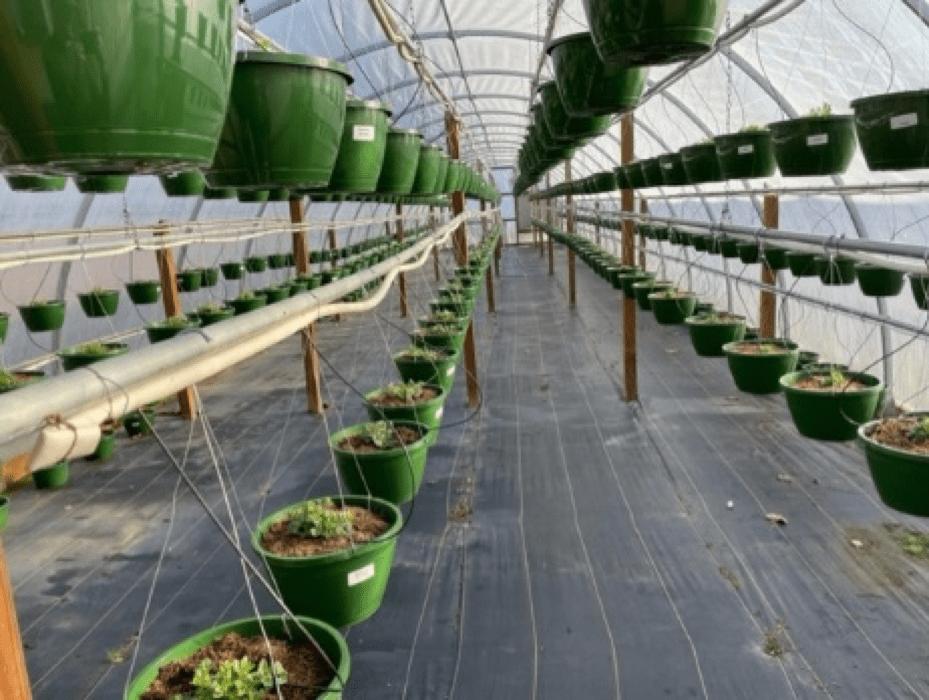Crop Production

While not known for its brutally cold winters, Alabama can experience periods of unseasonably cold weather that can severely impact greenhouse growers across the state. Whether growing vegetable transplants, bedding plants, or perennials, heat from an outside source is often required to produce a quality plant. Long periods of cold, cloudy weather cause greenhouse growers to rely on operating heaters continuously to supply the greenhouse with heat for sufficient plant growth.

Sulfur dioxide damage on petunia and verbena. Leaves appear scorched and curled at the tips.
Often on these days, ventilation is at a minimum or even nonexistent. When burning propane or natural gas, pollutants such assulfur dioxide and ethylene can be released with the exhaust. Non-vented heaters release heat along with these combustion pollutants directly into the greenhouse. When ventilation is not available, these pollutants can increase in concentration to levels that cause damage to leaf tissue on susceptible plants. Plant damage can be observed with as little as 0.5 ppm sulfur dioxide present. However, not all plant species display the same sensitivity to this pollutant. Petunia and tomato are two of the most sensitive plant species commonly grown in greenhouses. These species typically exhibit injury sooner than any other species, in some instances in less than one hour. Because of this, some growers will place petunia or tomato plants in the greenhouse to act as indicator plants to monitor for sulfur dioxide contamination.
Injury to plant tissue is a result of sulfur dioxide entering the plant through stomata and mixing with water to create sulfuric acid. This causes leaf burn to the affected area. Injury is typically present along the leaf margins. Leaf curling or twisting may be observed prior to chlorosis.
Heaters
Using vented rather than non-vented heaters is highly recommended for heating greenhouses. Plants grown in houses with vented heaters can also succumb to damage from pollutants when an inadequate amount of oxygen is present due to lack of venting. When oxygen levels are low, incomplete combustion may occur leading to increased concentrations of pollutants. One square inch of vent cross sectional area should be provided for every 2,500 BTU capacity of the heater. A 200,00 BTU Heater would require 80 square inches of vent area to insure adequate ventilation. Clear blue flames indicate proper burning. Yellow to orange flames should raise concern over malfunction or impurities.

Early signs of sulfur dioxide damage on petunia. Leaf tips appear scorched.
To reduce the instance of sulfur dioxide damage, routine heater maintenance should also be conducted. Regular maintenance can allow heaters to burn more efficiently, resulting in fewer amounts of harmful gasses entering the greenhouse. If sulfur dioxide damage is suspected, venting the greenhouse as much as possible to introduce fresh air into the house is advised. The addition of interior circulating fans can also help to reduce potential damage. For more information on this topic see Greenhouse Vegetables and Ethylene Damage – Alabama Cooperative Extension System (aces.edu).

